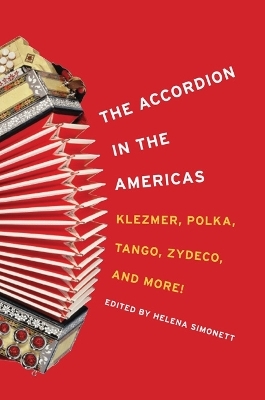
The Accordion in the Americas
University of Illinois Press (Verlag)
978-0-252-07871-2 (ISBN)
An invention of the Industrial Revolution, the accordion provided the less affluent with an inexpensive, loud, portable, and durable "one-man-orchestra" capable of producing melody, harmony, and bass all at once. Imported from Europe into the Americas, the accordion with its distinctive sound became a part of the aural landscape for millions of people but proved to be divisive: while the accordion formed an integral part of working-class musical expression, bourgeois commentators often derided it as vulgar and tasteless. This rich collection considers the accordion and its myriad forms, from the concertina, button accordion, and piano accordion familiar in European and North American music to the exotic-sounding South American bandoneon and the sanfoninha. Capturing the instrument's spread and adaptation to many different cultures in North and South America, contributors illuminate how the accordion factored into power struggles over aesthetic values between elites and working-class people who often were members of immigrant and/or marginalized ethnic communities. Specific histories and cultural contexts discussed include the accordion in Brazil, Argentine tango, accordion traditions in Colombia and the Dominican Republic, cross-border accordion culture between Mexico and Texas, Cajun and Creole identity, working-class culture near Lake Superior, the virtuoso Italian-American and Klezmer accordions, Native American dance music, and American avant-garde.
Contributors are María Susana Azzi, Egberto Bermúdez, Mark DeWitt, Joshua Horowitz, Sydney Hutchinson, Marion Jacobson, James P. Leary, Megwen Loveless, Richard March, Cathy Ragland, Helena Simonett, Jared Snyder, Janet L. Sturman, and Christine F. Zinni.
Helena Simonett is an assistant professor of Latin American studies, associate director of the Center for Latin American Studies, and adjunct assistant professor in the Blair School of Music at Vanderbilt University. She is the author of Banda: Mexican Musical Life Across Borders.
Introduction 1
HELENA SIMONETT
Chapter 1 From Old World to New Shores 19
HELENA SIMONETT
Chapter 2 Accordion Jokes: A Folklorist's View 39
RICHARD MARCH
Chapter 3 From Chanky-Chank to Yankee Chanks: The Cajun Accordion as Identity Symbol 44
MARK F. DeWITT
Chapter 4 'Garde ici et 'garde la-bas: Creole Accordion in Louisiana 66
JARED SNYDER
Chapter 5 "Tejano and Proud": Regional Accordion Traditions of South Texas and the Border Region 87
CATHY RAGLAND
Chapter 6 Preserving Territory: The Changing Language of the Accordion in Tohono O'odham Waila Music 112
JANET L. STURMAN
Chapter 7 Accordions and Working-Class Culture along Lake Superior's South Shore 136
JAMES P. LEARY
Chapter 8 Play Me a Tarantella, a Polka, or Jazz: Italian Americans and the Currency of Piano-Accordion Music 156
CHRISTINE F. ZINNI
Chapter 9 The Klezmer Accordion: An Outsider among Outsiders 178
JOSHUA HOROWITZ
Chapter 10 Beyond Vallenato: The Accordion Traditions in Colombia 199
EGBERTO BERMUDEZ
Chapter 11 "A Hellish Instrument": The Story of the Tango Bandoneon 233
MARIA SUSANA AZZI
Chapter 12 No ma'se oye el fuinfuan: The Noisy Accordion in the Dominican Republic 249
SYDNEY HUTCHINSON
Chapter 13 Between the Folds of Luiz Gonzaga's Sanfona: Forro Music in Brazil 268
MEGWEN LOVELESS
Chapter 14 The Accordion in New Scores: Paradigms of Authorship and Identity in William Schimmel's Musical "Realities" 295
MARION S. JACOBSON
Glossary 315
Contributors 319
Index 323
| Reihe/Serie | Music in American Life |
|---|---|
| Co-Autor | María Susana Azzi, Egberto Bermúdez, Mark DeWitt, Joshua Horowitz |
| Zusatzinfo | 34 black & white photographs, 3 maps, 1 chart, 1 music example |
| Verlagsort | Baltimore |
| Sprache | englisch |
| Maße | 156 x 235 mm |
| Gewicht | 567 g |
| Themenwelt | Kunst / Musik / Theater ► Musik ► Instrumentenkunde |
| Kunst / Musik / Theater ► Musik ► Klassik / Oper / Musical | |
| Geschichte ► Teilgebiete der Geschichte ► Kulturgeschichte | |
| Sozialwissenschaften | |
| ISBN-10 | 0-252-07871-3 / 0252078713 |
| ISBN-13 | 978-0-252-07871-2 / 9780252078712 |
| Zustand | Neuware |
| Informationen gemäß Produktsicherheitsverordnung (GPSR) | |
| Haben Sie eine Frage zum Produkt? |
aus dem Bereich


